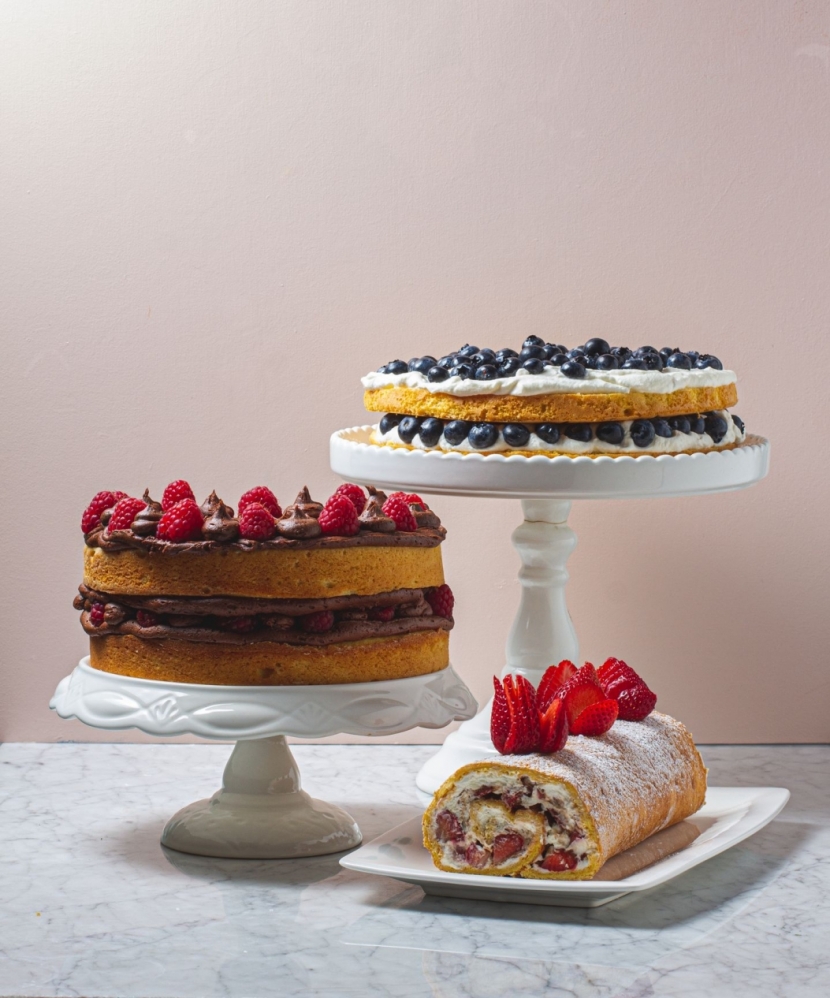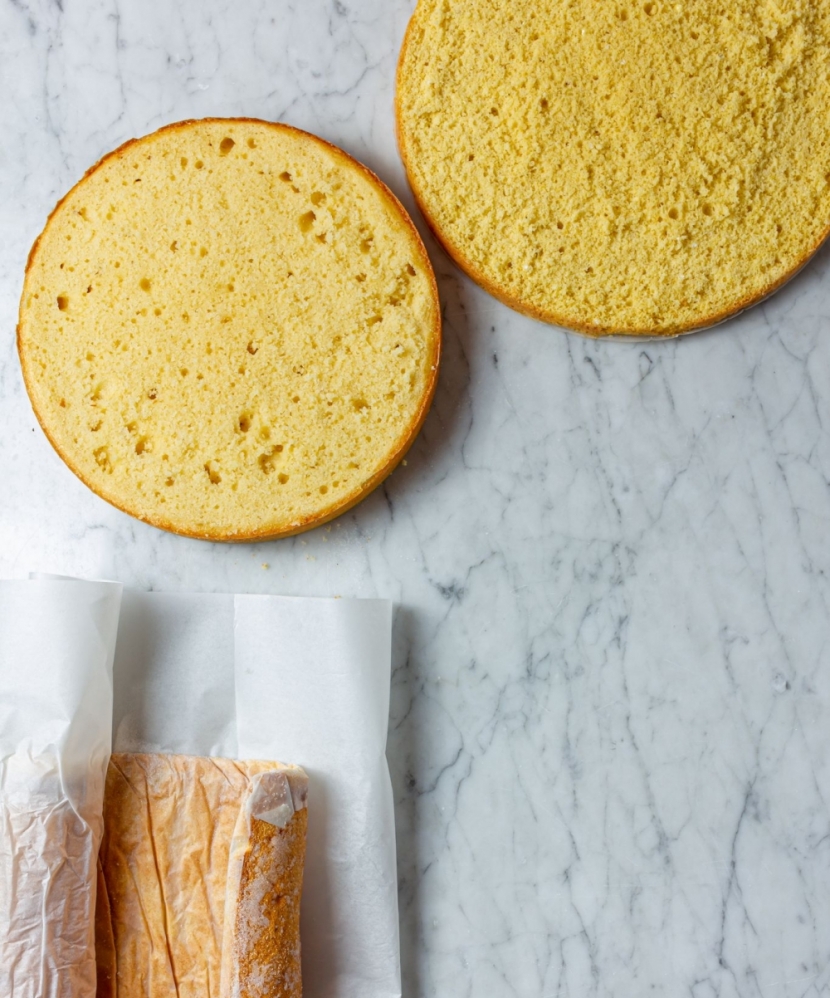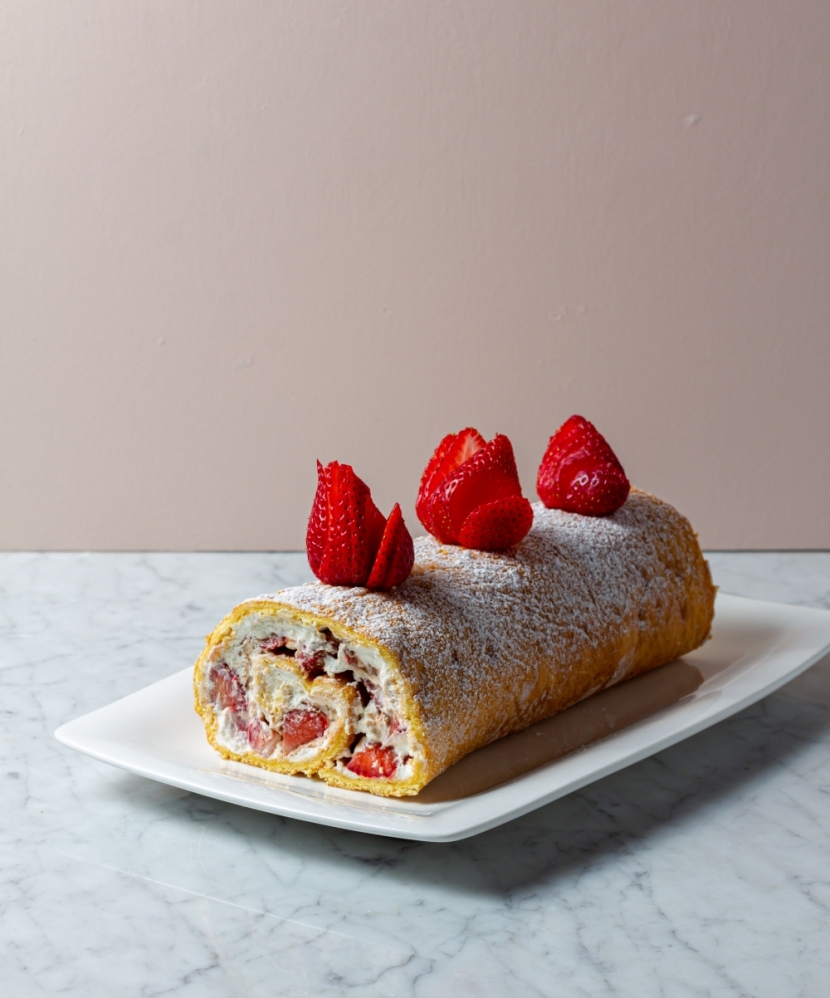Let There Be Cake
With fresh fruit on the horizon, it’s a great time to perfect your cake techniques and fill them up with the bounty that nature brings. Start with the basics, find ways to alter flavours and textures, seek inspiration the fresh fruits of the season, and turn them into the cake of your dreams.
The basics
Here’s a quick look at just some of the basics of cake baking and a few examples of cake staples that will be the launching pad for flavour.
Cake flour versus all-purpose
What’s the difference? It’s all about the protein. Whereas all purpose flour has anywhere between 12 and 14 per cent protein, cake flour is often made from a softer form of wheat and contains less protein, weighing in at about 3 grams of protein per 30 grams of flour or 10 per cent of the total. The result is less gluten formation and a lighter crumb, which is desirable in cakes. That said, many recipes are developed using all-purpose flour for facility, so the best rule of thumb is to follow the recipe. If a recipe calls for cake and pastry flour and you don’t have it, you can substitute all-purpose flour. For every cup of cake flour in the recipe, reduce the amount of all-purpose flour by 2 tablespoons and add 2 tablespoons of cornstarch.
Gimme some sugar
Sugar in cakes does more than just make them taste sweet. It also plays a vital textural role, helping to keep cakes moist. So while it’s tempting and to cut sugar, just remember that removing too much sugar from a recipe will alter the structure and not just the taste. The skinny on fat Fats such as butter and vegetable and olive oils perform important functions in cakes. They add flavour and richness and enhance the texture and moistness of a cake. They also help the cake rise. When butter and sugar are creamed together, they trap air that helps the cake rise during baking. A cake with fat in it will also last a little longer than one without fat.
Creamed cake
If you’ve made birthday cake, you’ve probably made a creamed cake or butter cake. As the name suggests, butter and sugar are creamed together first to make a light fluffy batter. Eggs and flavourings such as vanilla are incorporated and then the dry ingredients and sometimes milk are added at the end. The result is a moist, dense cake that stands up to buttercream.
Classic genoise
A sponge cake that starts out with eggs and sugar whipped together to form golden ribbons of goodness, this cake is often enriched with a few extra yolks. The technique involves warming eggs and sugar in a bain-marie while whipping. Unlike a creamed cake, the butter is melted and goes in at end, requiring a light hand and a deft folding technique to make sure you don’t squish those lovely bubbles you’ve just made. With less butter than a cream cake, a genoise is slightly less rich, but its light and airy texture makes it perfect to soak up flavour and it can be spiked with syrups.
Fatless sponge
A simple 2:1:1 ratio of eggs, sugar and flour, the fatless sponge has no oil or butter to weigh it down, but relies on eggs and egg whites being whipped high, and a rising agent such as baking powder to give the cake its loft. This is the basis for sponge cakes such as chiffon or angel food and is also perfect for rolling into roulade or jelly-roll-style cakes.
Don’t forget the flavour
Experiment with flavours beyond vanilla. Lavender, almond, orange, thyme, basil, lemon balm, cardamom will be your friends. If you are using a flavour extract, just make sure you understand how potent it is when deciding how much to add. If you are adding a syrup, consider using it to drizzle over the cake rather than adding it to the batter so you don’t alter the moisture content of the recipe. A great way to add flavour is through the filling and that’s where the fresh fruit of the season comes in. Look for delicious pairings and fill layers with rhubarb poached in ginger or elderflower syrup, blueberries drizzled with lavender syrup, classic combinations of raspberries and chocolate or distinct pairings such as the one for strawberries on the next page.
Classic genoise
A sponge cake that starts out with eggs and sugar whipped together to form golden ribbons of goodness, this cake is often enriched with a few extra yolks. The technique involves warming eggs and sugar in a bain-marie while whipping. Unlike a creamed cake, the butter is melted and goes in at end, requiring a light hand and a deft folding technique to make sure you don’t squish those lovely bubbles you’ve just made. With less butter than a cream cake, a genoise is slightly less rich, but its light and airy texture makes it perfect to soak up flavour and it can be spiked with syrups.
Fatless sponge
A simple 2:1:1 ratio of eggs, sugar and flour, the fatless sponge has no oil or butter to weigh it down, but relies on eggs and egg whites being whipped high, and a rising agent such as baking powder to give the cake its loft. This is the basis for sponge cakes such as chiffon or angel food and is also perfect for rolling into roulade or jelly-roll-style cakes.
Don’t forget the flavour
Experiment with flavours beyond vanilla. Lavender, almond, orange, thyme, basil, lemon balm, cardamom will be your friends. If you are using a flavour extract, just make sure you understand how potent it is when deciding how much to add. If you are adding a syrup, consider using it to drizzle over the cake rather than adding it to the batter so you don’t alter the moisture content of the recipe. A great way to add flavour is through the filling and that’s where the fresh fruit of the season comes in. Look for delicious pairings and fill layers with rhubarb poached in ginger or elderflower syrup, blueberries drizzled with lavender syrup, classic combinations of raspberries and chocolate or distinct pairings such as the one for strawberries on the next page.
Balsamic glazed strawberry roulade with basil mascarpone cream
Dressing fresh strawberries with balsamic vinegar and a hint of basil intensifies the flavours of strawberries. It’s a classic combination of flavours that provides the inspiration for this roulade or Swiss Roll, made with a fatless sponge cake. The key to assembly is to roll the cake while still warm and allow it to cool that way to set the rolled shape, making it easier to fill.
4 eggs
1/2 cup (100 g) granulated sugar
2/3 cup (100 g) cake and pastry flour
3/4 tablespoon baking powder
For the balsamic glaze
1/2 cup balsamic vinegar
1 tablespoon honey
For the basil mascarpone cream
1 cup whipping cream
2 sprigs of basil (about 10 leaves)
2/3 cup mascarpone
1 tablespoon sugar
1 pound strawberries
Lightly butter a 10-by-14-inch jelly-roll pan and line with parchment. Preheat the oven to 425 F.
Using the whisk attachment of your stand mixture, whip the eggs and sugar together on high speed until the mixture is thick and foamy and the whisk leaves a trail when lifted. This will take up to 10 minutes.
Remove the bowl from the mixer and gently sift and fold in the flour in three parts, using a metal spoon to incorporate. Pour the batter into the prepared pan. Rather than smoothing with a spatula, which will deflate the cake, tip the pan slightly to allow the batter to run into each corner and fill the pan in an even layer.
Bake for 8 to 10 minutes at 425 F. Meanwhile, on a flat surface, lay out a tea towel and cover it with a sheet of parchment larger than your pan. Gently dust the parchment with a fine sugar such as caster sugar or berry sugar. (You can also use regular granulated sugar that you have blitzed in your food processor for a few seconds.) Once the cake is done, remove it from the oven and flip the pan face down onto the parchment. Remove the pan, and with the cake at one end of the parchment, with the short end facing you, gently roll the cake away from you, using the tea towel to lift and roll the cake. Allow the cake to cool in the rolled shape and set aside.
Make the balsamic glaze by combining the balsamic vinegar and honey in a small saucepan. Bring to the boil, reduce heat and allow to simmer and reduce until you have a thick syrup. Allow to cool and set aside.
Bring cream to a boil and drop in the basil leaves. Remove from heat and allow to steep for 20 minutes. Strain and chill for a minimum of 2 hours. Whip cream to stiff peaks and set aside. Whip mascarpone until smooth and airy. Fold the cream into the mascarpone and whisk a bit more to fully incorporate into a light and fluffy mixture. Set aside in the refrigerator.
Dice 3/4 of the strawberries and combine with 2 tablespoons of the balsamic glaze. Reserve the remaining glaze for future use.
To fill the cake, gently unroll it and carefully peel away the parchment. Place the cake on a clean tea towel. Apply the basil whipped cream in a thin layer and top with a layer of the diced strawberries. Gently roll the cake, using the tea towel to lift and roll the cake. Place the cake seam down on an oblong serving platter.
Chill the rolled cake for 1 hour before serving. Dust with powdered sugar and decorate with remaining strawberries. Use a serrated knife to cut slices of the roulade and enjoy.







